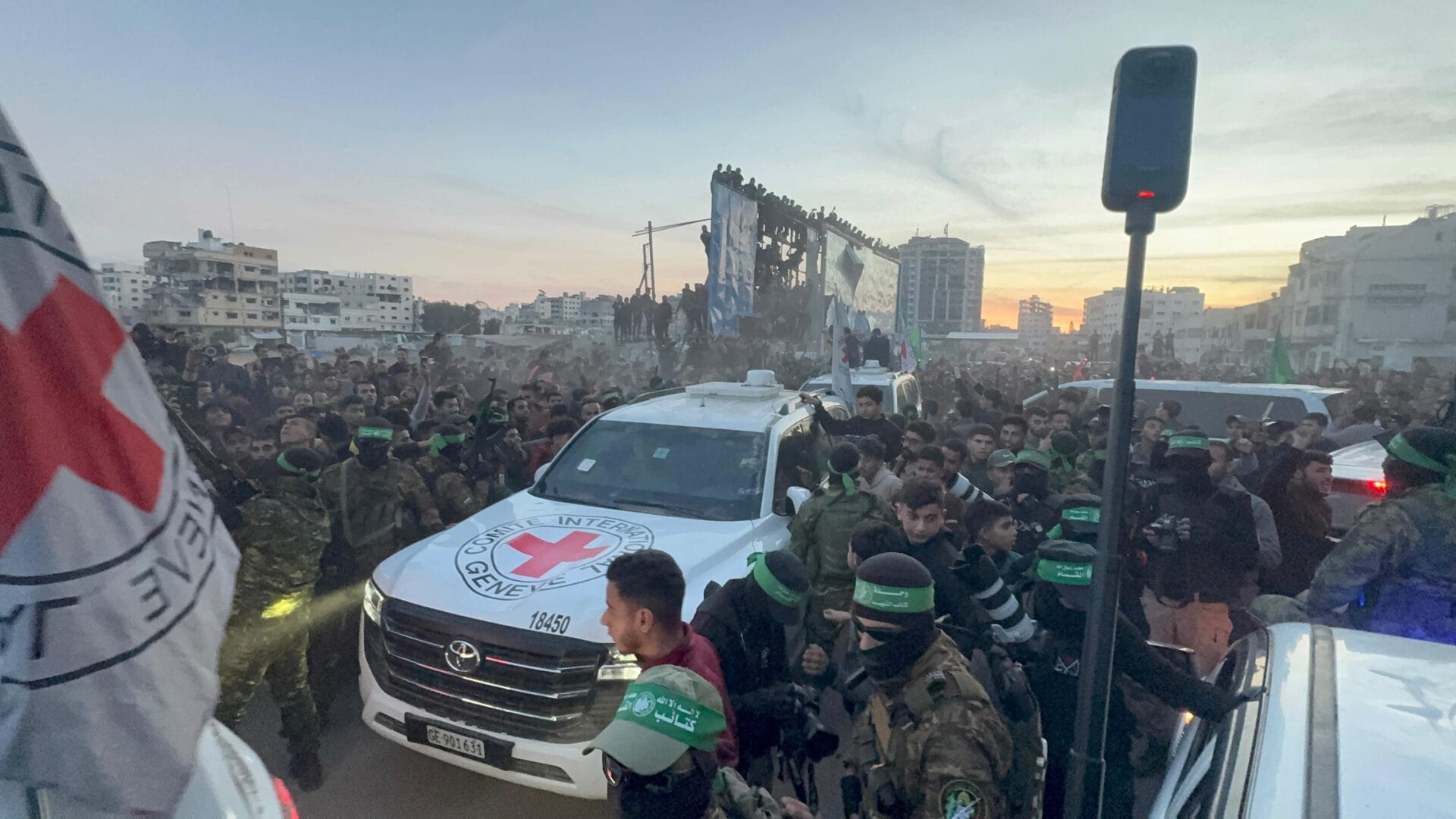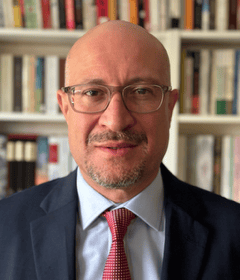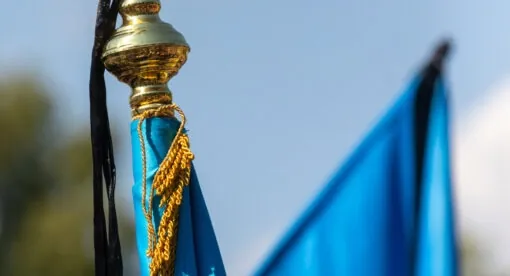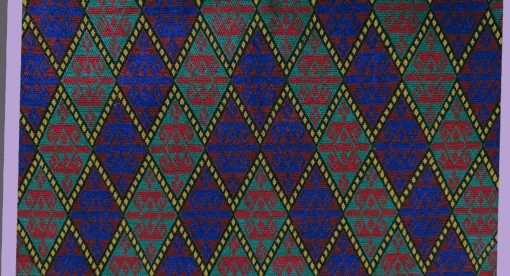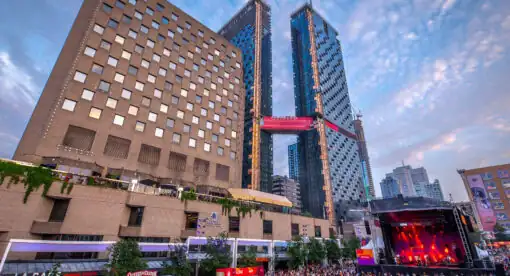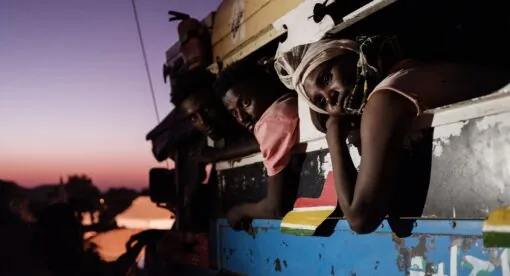Hours after the cease-fire between Israel and Hamas was announced, Israeli media widely broadcast a video showing a fighter from Hamas’ military wing, the Izz al-Din al-Qassam Brigades, mingling with jubilant Gazans celebrating the announcement. Headlines emphasized that Hamas fighters were seen in the heart of Gaza after nearly 14 months of a bloody war launched by Israel against the Gaza Strip. The declared goal of this war, begun in response to Hamas’ Oct. 7, 2023, attacks, was dismantling the group, but once the agreement came into effect, Qassam fighters appeared on Gaza’s streets in their distinctive white vehicles, dressed in military uniforms and receiving cheers and praise. This sparked significant debate in both Arab and Israeli circles about who the real victor of the conflict was.
Israel has unquestionably weakened Hamas both militarily and politically. But these scenes raised a more serious inquiry: Had Israel achieved its stated goal of destroying Hamas? While Israel’s bloody campaign has degraded its military capabilities, it appears to have boosted its military arm’s recruitment. The rise is evident in the growing number of militants in Qassam Brigades uniforms at hostage exchange ceremonies. It’s also shown in the group’s attacks over the past 14 months.
Politically, there is no doubt that Israel weakened Hamas by killing key figures including leader Yahya Sinwar, political bureau chief Ismail Haniyeh, and Qassam Brigades leader Saleh al-Arouri. Additionally, the pressure on Hamas to leave Qatar, its main host, has intensified. Israeli strikes on Iran and its ally Hezbollah have isolated Hamas, cutting off crucial support from Tehran, which was central to the technological advancements in its military arsenal, including rockets and drones.
After Sinwar assumed leadership of the movement in Gaza in 2017, he prioritized the Qassam Brigades at the expense of its political branch. This shift explained the sidelining of many political leaders when the Oct. 7 attacks began. Over time, it became evident that Hamas’ political arm had become a burden on the brigades, leading Sinwar himself to take charge after Haniyeh’s death.
Following Oct. 7, Hamas’ popularity surged in several Arab countries such as Jordan and Egypt. Stickers featuring the Qassam Brigades logo, with a red arrow symbolizing targeted Israeli soldiers, appeared on cars and shop doors in cities across the region. Even children at school festivals emulated Qassam spokesman Abu Obeida. In the West Bank, protesters chanted, “Put the sword before the sword, we are your men, Muhammad Deif (leader of the brigades),” and, “The entire West Bank is Hamas,’” These slogans also echoed in several Arab cities.
This rising popularity was fueled by Al Jazeera’s coverage of the group, which aired Qassam videos and statements, alongside discussions featuring sharply dressed analysts. The editorial tone revolved around themes like “resistance resilience,” portraying it as a “unique phenomenon” and highlighting Israel’s societal and governmental dilemmas. On the ground, the reality was less clear and complete.
To better understand the situation, the New Lines Institute analyzed 297 videos released by the Qassam Brigades documenting their attacks against Israeli soldiers between Oct. 27, 2023, and October 2024. These videos, shared on the Brigades’ official Telegram channel, provide insights into its military capabilities.
- Ground operations constituted 36% of the depicted military activity.
- Rocket barrages targeting Israeli territory accounted for 22%.
- Anti-armor weapons and homemade explosives made up 19%.
The predominance of ground operations during the Israeli campaign highlighted the Qassam Brigades’ recruitment capabilities, as such tactics depend on manpower. The reliance on locally produced weapons (rockets, anti-armor munitions, and explosives) underscored the limitations of smuggling weapons into Gaza, forcing reliance on “Iranian technology” for producing long-range missiles, drones, and other small- to medium-scale weaponry domestically.
Analysis of these videos over the year showed a peak in ground operations between May and June 2024, with a decline in other tactics. This pattern reflected Hamas’ improved recruitment amid the destruction wrought by Israel’s campaign. Northern Gaza’s depopulation pushed fighters to the south, yet they continued operations in the north using Gaza’s tunnel network.
Qassam recruits by pitching the group as a refuge against the Israeli occupation. It aims at angry youth, using religious language that appeals in conservative areas like Gaza. Qassam also supports young men who lost their families and homes. Their numbers are estimated to be increasing after the Gaza war.
Operations in southern Gaza made up 35% of the attacks analyzed, more than in the north, which, before the war, was the most densely populated area. Khan Younis, Sinwar’s hometown, emerged as a Qassam stronghold, explaining the fierce resistance and repeated Israeli bombardments there. Its strategic location near the Israeli border and the fighters’ retreat southward toward Rafah prompted Israeli forces to launch an incursion from April to May 2024. This allowed Qassam fighters to continue targeting Israeli soldiers in the north.
Hamas’ manufacturing capabilities suffered due to the war and the Israeli blockade. Reports indicate the group repurposed remnants of Israeli artillery for weapon production, reflecting its struggle to access essential raw materials.
A Palestinian source, speaking anonymously, acknowledged that while Hamas and the Qassam Brigades have been significantly weakened, they remain the dominant force in Gaza due to the absence of any viable alternative. However, internal criticism of Hamas has grown louder, as seen in social media discussions that blame the group for the destruction of the Gaza Strip because of its Oct. 7 attack. Gazans have paid a high price, losing family and homes.
Hamas’ popularity increased in the West Bank, even as it declined in Gaza. Similarly, several Jordanians were arrested for plotting attacks inspired by Hamas, reflecting the group’s ideological influence beyond Gaza. This shows that Qassam, an armed group, is more accepted as an anti-Israel movement than Hamas, a political administration. This may push Qassam to prioritize its military side over its political wing, leading some Palestinian writers to call for a review of Qassam’s military actions. Hamas and the Qassam Brigades retain the ability to recruit and operate in Gaza, but regional and local realities suggest they are unlikely to govern the strip alone. The group’s political weaknesses have increased reliance on its military wing, but rebuilding its arsenal will take time and depend on Iran’s capacity and willingness to assist.
Conclusion
This duality of political weakness and military persistence drives Hamas to project a narrative of victory, which has spread across its media channels and those of its supporters. The absence of a political alternative to Hamas in Gaza, coupled with Israel’s rejection of the Palestinian Authority’s involvement there, has solidified Hamas’ position. The U.S. should emphasize the two-state solution and empower alternative Palestinian partners to govern Gaza. Listening to diverse Palestinian voices, particularly those critical of Hamas, could help moderate the group’s political and military behavior. This approach may also weaken its inspirational role among disaffected Arab youth and mitigate the regional crises it fuels, such as in Jordan and the West Bank. Without diversifying the narrative or reducing political polarization, exaggerated and misleading portrayals will continue to shape perceptions of Hamas.
Murad Batal Shishani is a Resident Senior Fellow at the New Lines Institute’s Middle East Center and a member of the editorial committee of Alpheratz magazine. He is a leading international expert on militancy and Islamic groups that operate in the Middle East and the North Caucasus. With over 25 years of experience as an expert, writer, and field journalist, Murad worked for the BBC World Service (Arabic and English) for more than 16 years as a roving correspondent. In this role, he witnessed many significant global stories and events. He has worked in conflict zones such as Iraq, Ukraine, the Syrian border, the West Bank, Jerusalem, and the Gaza Strip. He is the founder of the London-based consultancy group “Remarks on Political Violence” and has authored three books in Arabic covering the North Caucasus conflict and militant groups in the Middle East. Throughout his career, he has also written numerous articles, essays, and studies in both Arabic and English for various prestigious publications.
The views expressed in this article are those of the author and not an official policy or position of New Lines Institute.

